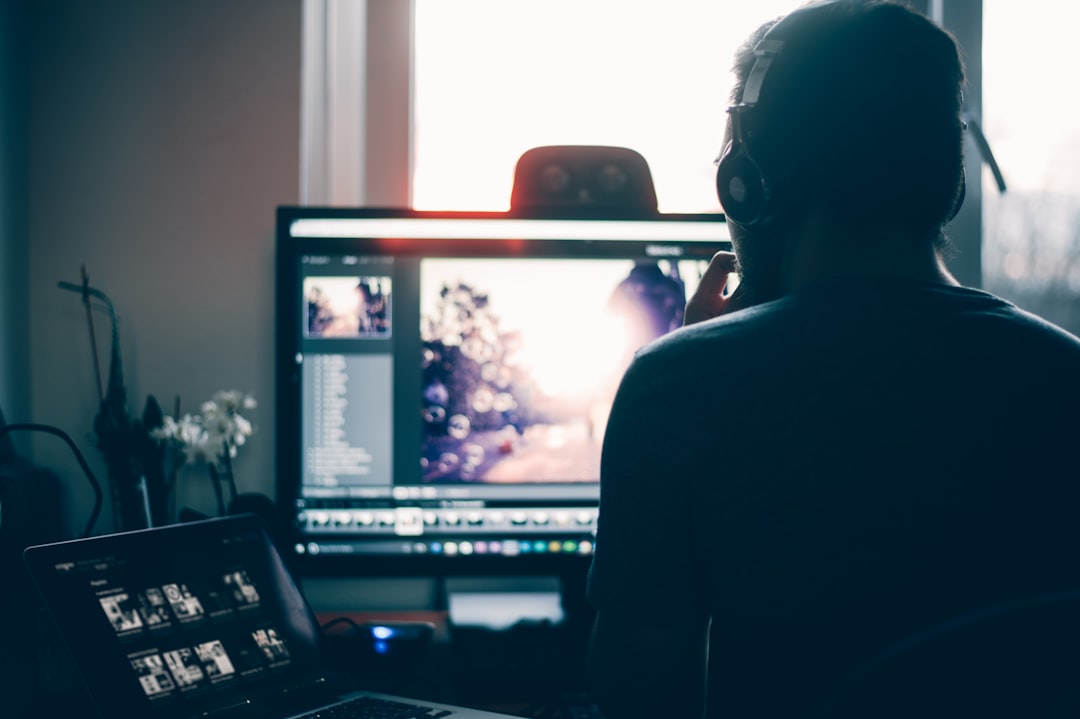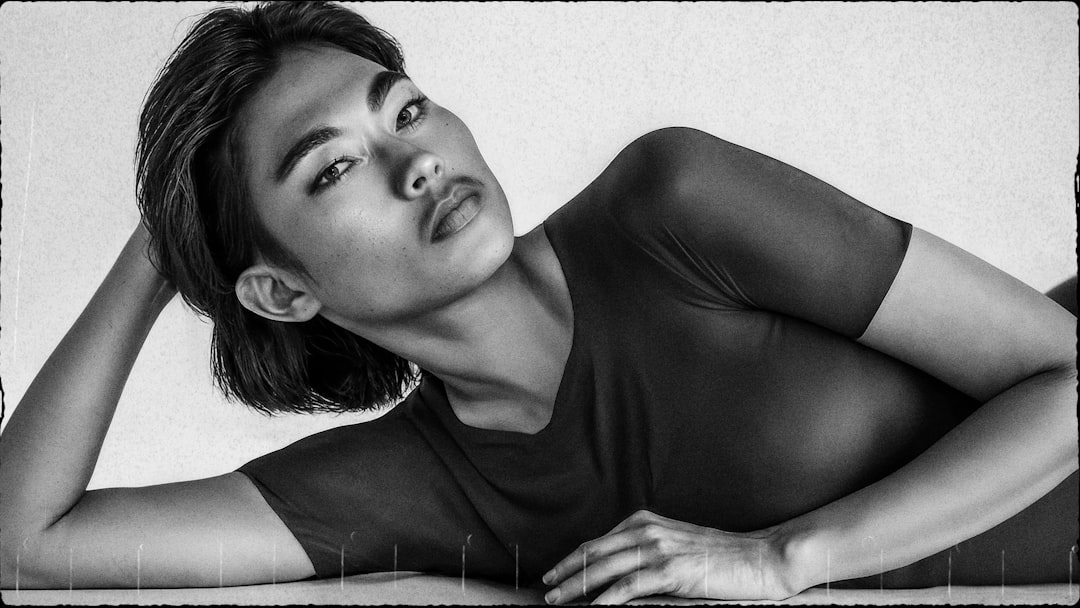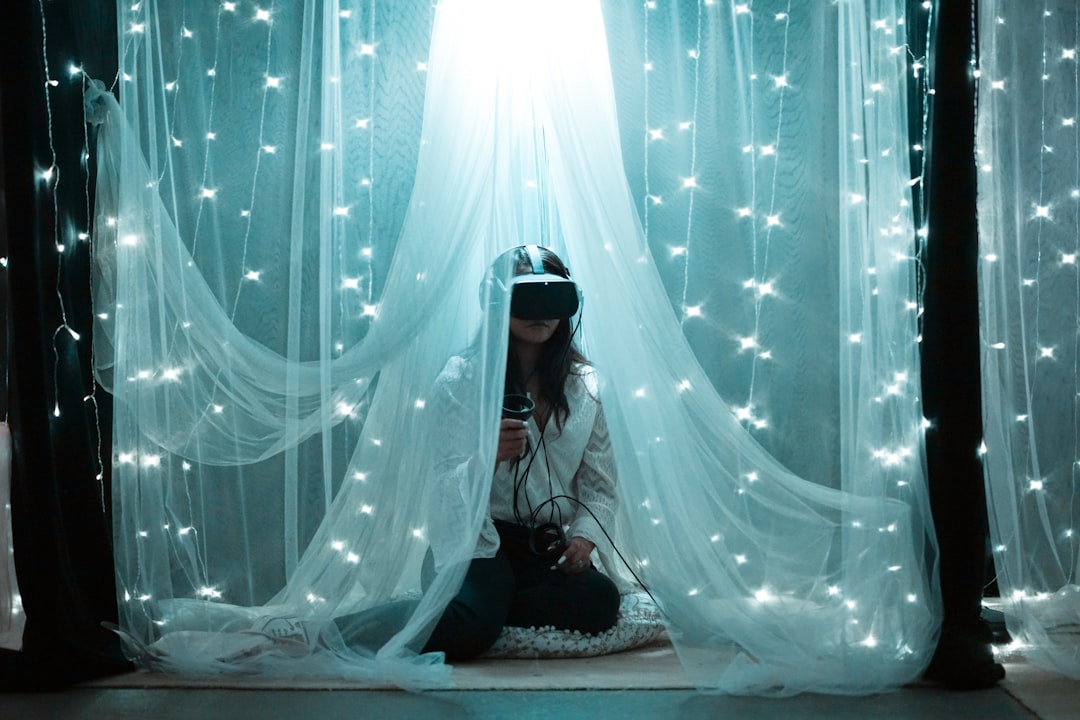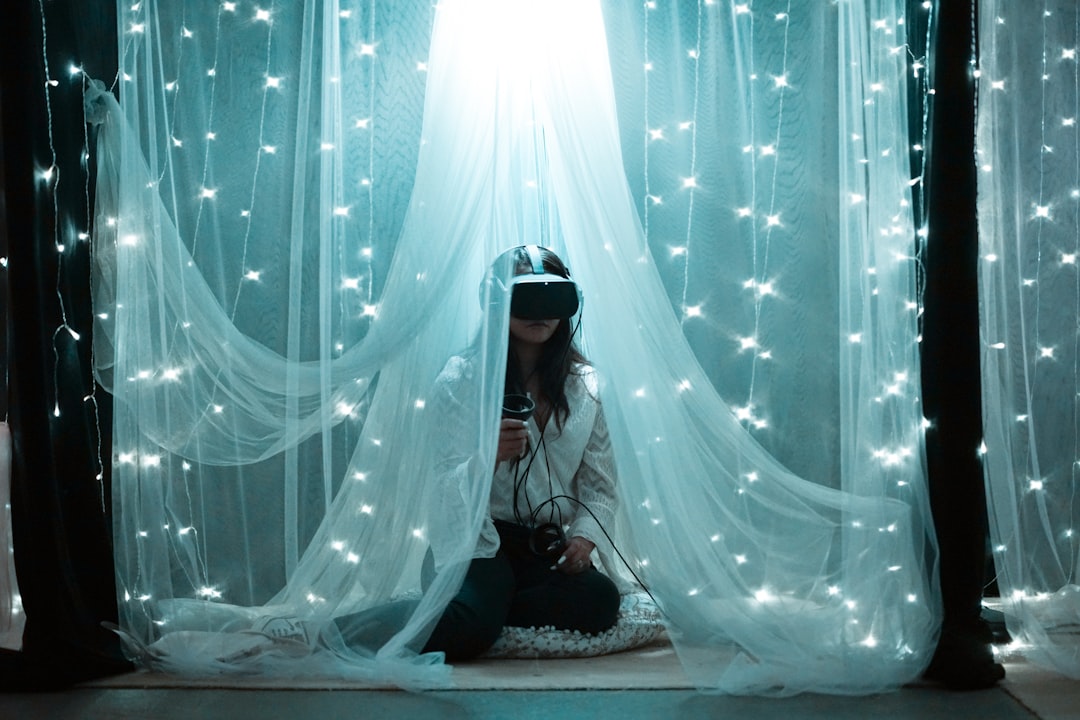The Evolution of AI-Powered Photo Editing Tools A 2024 Perspective
The Evolution of AI-Powered Photo Editing Tools A 2024 Perspective - AI-Driven Background Removal Streamlines Editing Process
Artificial intelligence is revolutionizing image editing, particularly in the area of background removal. Tools powered by AI, such as Pixlr and PhotoRoom, excel at quickly and precisely isolating subjects from their backgrounds. This efficiency boost is a boon for designers, freeing them from time-consuming manual edits and allowing them to concentrate on enhancing the creative aspects of their work.
The transition from traditional, labor-intensive background removal techniques to AI-powered solutions represents a significant shift in the editing workflow. This is especially evident in fields like e-commerce and social media where rapid image production is crucial. Further democratizing this technology, applications like Pixelcut make these advanced capabilities accessible to a wider range of users, regardless of their experience with image editing. The simplicity of their interfaces allows anyone to confidently manipulate images.
The ongoing development of AI-powered editing tools suggests a future where editing becomes even more intuitive, powerful, and artistic. These developments promise to reshape the landscape of digital image manipulation, making complex edits faster and easier than ever before.
AI-powered background removal has revolutionized the photo editing process by leveraging sophisticated computer vision. These tools, relying on deep learning algorithms, can meticulously dissect images, separating foreground subjects from the background with impressive precision, frequently exceeding 95% accuracy. Interestingly, many of these systems learn from user interaction. When a user manually corrects an AI-generated cutout, the system incorporates this feedback, refining its performance for future tasks. This continuous learning loop allows the AI to progressively enhance its ability to distinguish between subjects and backgrounds.
Furthermore, some AI models are capable of processing even high-resolution images in mere seconds, which is remarkable. This significantly reduces time spent on monotonous tasks and frees photographers to focus their energy on the artistic aspects of their work. The algorithms aren't restricted to basic color information (RGB); some can utilize depth data obtained from specialized cameras, offering more sophisticated ways to segment an image based on three-dimensional spatial relationships.
The integration of generative adversarial networks (GANs) has also pushed the boundaries of background removal. These models can realistically fill in replaced backgrounds, resulting in images that maintain context and visual consistency, often deceiving those unfamiliar with digital manipulation techniques. This technology has democratized the ability to apply complex editing techniques. Numerous AI-powered photo editing apps and software suites are now available, catering to both novice and experienced editors, allowing anyone to take advantage of advanced editing capabilities without needing a deep understanding of the technology underpinning them.
Beyond photography, the ability to accurately remove backgrounds creates exciting possibilities across various fields. Augmented reality (AR) and virtual reality (VR) are prime examples, requiring precise segmentation to realistically integrate virtual elements into the real world or generate believable virtual environments.
While traditional editing often struggled to produce natural cutouts, especially with fuzzy or detailed edges like hair or complex patterns, AI techniques can now achieve this with surprising effectiveness. This rapid growth in the AI photo editing market, and the associated automation of creative workflows, raises questions about the future role of human editors within the creative industries.
It's also important to consider the ethical implications of this technology. The ease with which AI can manipulate images leads to the potential for creating misleading content. The line between authentic and edited images can blur, potentially posing challenges for creators and consumers in a digital space flooded with altered imagery. This necessitates ongoing discussions surrounding authenticity and the responsible use of these powerful tools.
The Evolution of AI-Powered Photo Editing Tools A 2024 Perspective - Machine Learning Enhances Photo Composition Techniques
Machine learning is increasingly refining photo composition techniques, providing photographers with a suite of tools to streamline their workflow. Features like automated subject identification, smart cropping suggestions, and automatic exposure adjustments lessen the need for repetitive manual edits. This evolution allows photographers to explore new compositional styles and effects, pushing creative boundaries while keeping composition central. Yet, as these AI tools gain prominence, concerns arise about the role of creative intuition, the potential diminishment of human artistry, and the ethical ramifications of AI-driven image manipulation. The field of photography is undergoing a transformation as these innovations redefine the boundaries of visual storytelling, bringing both exciting opportunities and complex considerations.
Machine learning is increasingly being used to refine photo composition techniques, drawing upon the principles established by master photographers. AI-powered tools are now capable of suggesting framing adjustments that align with artistic concepts like the rule of thirds, based on their analysis of vast image libraries. This ability to learn from a wealth of photographic data allows software to guide users towards more aesthetically pleasing compositions.
Recent developments have also seen the introduction of features like dynamic cropping. These tools leverage algorithms to track the movement and gaze direction of subjects within a photo, ensuring that important elements remain within the frame even when the composition changes in real time. It's fascinating how AI can anticipate the dynamic nature of a scene and adjust accordingly.
Furthermore, some AI tools are trained on massive datasets of images to identify aesthetic attributes and offer guidance on aspects like color correction and tonal adjustments that echo current design trends. Essentially, these tools are learning what makes a photograph aesthetically pleasing according to contemporary norms. This brings up some interesting questions about the influence of AI on developing a shared aesthetic.
Computer vision techniques play a crucial role in these enhancements. AI models can recognize visual elements such as lines and shapes within a photograph, using this understanding to automatically enhance the composition, directing the viewer's attention towards the primary subject. The level of detail that AI can perceive and act upon is quite remarkable.
In addition to these visual analyses, AI can also consider the lighting conditions present in a photograph. Algorithms can analyze factors like time of day and location to suggest the optimal angles or exposure settings, ultimately improving the visual impact of the shot. The ability to automatically adjust for environmental factors adds a layer of sophistication to the tools.
Unsupervised learning approaches are leading to the creation of original compositional styles by blending together different artistic influences. These AI tools are generating new visual languages, pushing the boundaries of conventional composition techniques. However, it remains to be seen if these novel compositions will lead to truly groundbreaking results or simply reshuffle existing elements in predictable ways.
AI algorithms can even learn individual user preferences over time, adapting their suggestions to align with a particular photographer's style. This personalized approach leads to a more intuitive editing experience as the AI adapts its suggestions to the individual user's vision. The question is whether it will truly understand the nuances of an artist's intent or just surface level aspects of their preferred color palette or framing.
Machine learning's impact on composition extends beyond the purely visual. Some tools are starting to explore affective computing, attempting to predict viewer responses to different compositions based on the emotional impact of various visual elements. This foray into the realm of emotional response adds another dimension to the analysis of image composition. But it's important to acknowledge the complexity and subjectivity of human emotions, raising questions about how well AI can truly gauge our responses.
The immediate feedback offered by AI can be immensely valuable for aspiring photographers, significantly reducing the learning curve. These tools offer real-time guidance on composition, creating a hands-on learning experience. However, one might argue that too much reliance on AI suggestions could hinder the development of independent creative thinking and visual problem-solving skills.
While the advancements in AI-powered photo composition are exciting, it's important to consider potential downsides. The heavy reliance on machine learning raises concerns about artistic expression and originality. The desire for consistency and conformity within algorithms might unintentionally lead to a homogenization of visual styles, diminishing the individuality that often defines artistic endeavors. We need to be mindful of the role of AI in photography and consider its impact on the overall creativity and evolution of the medium.
The Evolution of AI-Powered Photo Editing Tools A 2024 Perspective - Automated Color Correction Algorithms Improve Image Quality
AI-driven color correction algorithms are significantly improving image quality in the realm of photography. These algorithms, powered by machine learning, can analyze images and automatically adjust colors, including hue, saturation, brightness, and contrast, with remarkable accuracy. This automated process simplifies the photo editing workflow, allowing both casual photographers and professionals to achieve high-quality color adjustments easily. The tools strive to ensure that the color balance, exposure, and contrast accurately reflect the photographer's artistic intent. While these automated color correction tools offer significant benefits in terms of efficiency and accessibility, they also raise questions regarding the future role of human creativity and the potential for a homogenization of image styles in the digital landscape. The line between human artistry and algorithmic edits may become increasingly difficult to discern as these algorithms continue to refine their capabilities.
Automated color correction algorithms are transforming how we adjust image colors. Techniques like histogram equalization, which redistributes the intensity of pixels, are used to boost contrast without sacrificing image quality. These algorithms are particularly effective at improving the overall appearance of photos.
Recent advancements in deep learning have allowed algorithms to delve deeper into color harmony, adhering more closely to established artistic principles. By understanding color theory, these algorithms produce images with a refined aesthetic.
One of the impressive aspects of these algorithms is their capability to identify and fix color casts – a common issue arising from lighting variations. This is a boon for users of all skill levels, as accurate color reproduction is now easily achievable.
The algorithms' ability to generalize correction techniques across different environments – such as indoor and outdoor scenes – is a result of their training on extensive image datasets. These datasets include many examples of color correction adjustments, allowing algorithms to effectively handle a wide range of scenarios.
Interestingly, some studies suggest that automated color correction often surpasses manual editing, especially when speed is crucial. Algorithms can process images in a fraction of the time it takes a human editor.
New developments in computational photography take this a step further, allowing apps to assess the context of the image. Based on the scene or subject, the algorithm dynamically adjusts colors differently – resulting in highly customized corrections.
Many modern algorithms incorporate user feedback loops into their operation, continually refining their performance. This resembles a collaborative editing process, where the algorithm learns from past edits to improve its results.
Beyond simply fixing color imbalances, some systems can analyze color palettes to understand the emotional tone of a photo. This gives users more nuanced control over their visual storytelling, offering suggestions for color adjustments that match the desired mood.
Traditional RGB color spaces have limitations. Advanced algorithms are moving beyond this to leverage perceptual color spaces, allowing them to predict and correct color with greater precision across diverse lighting conditions.
While the advancements are exciting, they raise some questions about artistry in photography. As automated tools excel at "perfecting" images, the boundaries between skilled editing and automation become less clear. This raises complex questions about the future of traditional photo editing skills and the role of human intuition in the process.
The Evolution of AI-Powered Photo Editing Tools A 2024 Perspective - AI-Powered Facial Recognition Refines Portrait Editing
In 2024, AI-powered facial recognition has significantly refined the process of portrait editing. These tools analyze facial features with remarkable detail, enabling highly precise and customized enhancements. This can range from subtle skin smoothing to more dramatic eye brightening or feature reshaping. The accessibility of these tools has democratized high-quality portrait editing, making it easier for anyone to achieve professional-looking results.
However, the power of AI-driven facial manipulation also raises concerns about the authenticity of images. The potential for subtle alterations to create a false impression or even spread misinformation is increasingly present. As these tools become even more sophisticated, the line between natural and digitally enhanced portraits may blur further, leading to questions about the role of human artistry and the impact on viewer perception. We need to carefully consider how this technology evolves and the balance between technical advancement and preserving the integrity of imagery. While these tools undeniably offer creative possibilities, they also necessitate critical conversations about responsible use and the impact on creative expression within photography.
AI is increasingly refining portrait editing by leveraging facial recognition technology. These systems, powered by sophisticated algorithms, can now identify unique facial features with remarkable precision, often exceeding 98% accuracy. This level of detail allows for highly targeted adjustments that go beyond basic enhancements. We're seeing a shift from generalized edits to modifications that are tailored to individual facial characteristics.
Deep learning plays a crucial role in this advancement, enabling real-time facial analysis. AI-powered tools can intelligently adjust lighting and shadows, effectively creating the impression of different moods or times of day within a portrait. This reduces the need for manual adjustments, streamlining the editing process. Intriguingly, some systems can even synthesize numerous facial angles and expressions, effectively creating a "digital twin" of an individual. This allows for comprehensive retouching that maintains consistency across different images, ensuring a uniform aesthetic.
Landmark detection, a technique that identifies key facial features like eyes, nose, and mouth, further enhances the precision of these edits. This technique empowers users with the ability to fine-tune specific elements, such as smoothing skin or brightening eyes. Moreover, AI can automatically enhance or reshape facial features based on user preferences, pushing the boundaries of what was previously possible. It allows users to experiment with desired aesthetics, ultimately expressing unique personal styles within their portrait photography.
Beyond individual preferences, AI can analyze vast databases of portraits to identify common aesthetic trends. This allows users to easily apply popular styles or modifications, effectively aligning their work with current visual culture. This ability to learn from a broad range of aesthetic preferences raises questions about how AI will influence the evolution of visual styles in portrait photography.
Interestingly, AI algorithms can adapt to cultural and demographic nuances, enabling portrait editing tools to recognize and respect diverse beauty standards. This contextual awareness leads to adjustments that cater to different audiences and sensitivities, offering broader appeal and relevance in visual storytelling.
However, these advancements also raise ethical concerns. The ease with which AI can manipulate or synthesize realistic images of individuals fuels discussions around consent and privacy. It's essential to consider the implications of using this technology without explicit permission.
Studies have shown that AI-driven edits can significantly reduce the time spent on portrait retouching. This efficiency boost frees professionals to focus on the more creative aspects of their work, increasing productivity in demanding environments like fashion or advertising.
But as AI refines portrait editing to near-perfection, it begs the question of authenticity. While these tools certainly elevate the quality of portrait photography, they also raise complex questions about the balance between enhancement and the honest representation of individuals in visual media. As AI continues to evolve, the role of human intuition and artistic interpretation within portrait photography will continue to be a subject of discussion and innovation.
The Evolution of AI-Powered Photo Editing Tools A 2024 Perspective - Real-Time Style Transfer Revolutionizes Photo Filters
Real-time style transfer is changing how we use photo filters, allowing for the merging of artistic styles onto ordinary pictures. While the first attempts at style transfer were limited to basic image filters, recent progress has made them much faster, more precise, and more creatively flexible. This allows anyone to easily give their photos a unique aesthetic touch, boosting artistic expression. Unfortunately, using these tools effectively often requires powerful computers, which might limit their wider adoption. Looking ahead, we could see real-time style transfer becoming even more integrated with newer technologies like augmented reality, potentially altering our experience of digital imagery.
The Evolution of AI-Powered Photo Editing Tools A 2024 Perspective - Real-Time Style Transfer Revolutionizes Photo Filters
Real-time style transfer has brought a new level of artistic expression to photo editing. It allows users to instantly apply the artistic style of a painting or other image to their own photos. This happens through sophisticated algorithms, usually convolutional neural networks, which intelligently analyze the image's content and style. It's fascinating how these algorithms can separate these aspects and then blend them in new and creative ways.
This technology has a definite cultural impact. It allows users to experiment with visual styles that are usually associated with renowned artists and art movements. It makes these artistic expressions more accessible, blurring the line between traditional artistic training and technological creation. Naturally, this raises questions about the 'ownership' of a resulting image. Is it the original photographer, or the developer of the AI tool that creates the style?
Unlike the fixed effects of traditional filters, style transfer is adaptive. It looks at the details of each image and adjusts the style application accordingly. Textures, patterns, and other important aspects of the photo are highlighted in a way that feels more natural than a generic filter.
However, real-time style transfer relies heavily on powerful GPUs to handle the computational demands of its algorithms. This creates a bit of a technology divide; users without high-performance computing capabilities might be limited in their access to top-tier results. This makes me wonder what the future of this technology looks like in terms of accessibility.
While incredibly powerful, style transfer sometimes struggles with intricate details or complex textures. The way the styles blend can cause unexpected visual effects, sometimes hindering the quality of the end result. This suggests that users need to be strategic in their image selection to get the best possible outcome.
Modern style transfer tools give users greater control over the application of a chosen style. They can adjust the intensity of the effect, providing a personalized approach to visual storytelling. This is a big step beyond the simplistic filter implementations we've had before.
Another interesting aspect is the ability to combine multiple artistic styles within a single image. This ability creates novel artistic hybrids that are entirely unique and reflect a fusion of creative influences. It's an exciting way to explore the boundaries of what's possible in photo editing.
The applications of real-time style transfer reach beyond hobbyist photography. Industries like fashion and marketing use these tools to quickly and easily produce creative marketing materials with a unique artistic aesthetic. It's impressive how rapidly this tech has transitioned from a research concept to practical implementation.
Studies suggest that images enhanced with artistic styles can evoke stronger emotional responses in viewers. This probably happens because the application of a style acts as a shortcut for triggering memories and associations connected to that style's origin. It's a fascinating connection between visual art and the viewer's emotional landscape.
The future of this technology is very promising. Continued research and development may allow style transfer tools to consider more context when applying a style. They might look at the narrative of the photo itself when selecting the best way to apply an artistic influence. It's exciting to think of the ways AI will enhance digital storytelling in the future.
The Evolution of AI-Powered Photo Editing Tools A 2024 Perspective - Ethical Considerations in AI-Assisted Photo Manipulation
The increasing sophistication of AI-powered photo editing tools brings with it a crucial need to address the ethical considerations of AI-assisted image manipulation. Concerns arise regarding the impact on our understanding of authenticity and the potential for misrepresentation, particularly with the ease of altering faces and other details. The potential for fabricated or misleading images is a growing worry, especially when advanced techniques can create seemingly natural alterations, making it difficult for viewers to distinguish between reality and manipulation. Consequently, a strong call for ethical guidelines within the field of photography emerges. It's essential for the industry to develop and adhere to clear standards that prioritize transparency when AI editing is involved. This transparency is critical for safeguarding the integrity of images and fostering responsible use of these powerful technologies. A careful balancing act is needed—one that supports creative expression and technological innovation while maintaining the ethical standards vital for trust and integrity in the visual media landscape. The ongoing discussions around these issues will become increasingly crucial as AI continues its evolution in shaping our visual world.
The rapid evolution of AI-powered photo manipulation tools raises significant concerns about the authenticity of images. Subtle alterations, often undetectable to the untrained eye, can lead to viewers misinterpreting the true nature of a photograph. This growing uncertainty about the integrity of visual media highlights the urgent need for ethical standards to guide editing practices.
Research suggests that AI-altered images, especially in advertising, can be more persuasive in eliciting emotional responses from viewers. This raises questions about the responsibility of creators to ensure that products and individuals are represented accurately and honestly. There's a potential for manipulation that could distort consumer perceptions.
AI tools frequently rely on large datasets for training their facial recognition systems. However, the demographic composition of these datasets often introduces biases, potentially impacting the fair and accurate representation of diverse populations. It's crucial to be mindful of these potential biases and ensure AI training methods are equitable and inclusive.
The potential for misuse of AI-driven photo editing extends beyond the realm of artistic expression. The ease with which deepfakes and other convincing altered images can be created adds to the existing challenges of determining credible information sources within the broader media landscape. The proliferation of misleading content is a serious concern.
Portrait editing using AI introduces ethical dilemmas regarding consent. Manipulative edits can be made without the subject's awareness, prompting questions about personal agency and the right to control one's visual representation. Clear boundaries and informed consent protocols are crucial to navigate this complex area responsibly.
Advanced color correction algorithms are designed to optimize aesthetics. However, these algorithms can sometimes inadvertently remove culturally significant aspects or personal nuances related to specific color palettes. This underscores the importance of acknowledging that automated processes may inadvertently oversimplify or disregard complex visual stories.
Integrating AI into the photo editing workflow encourages reliance on algorithmic suggestions. While this can streamline the editing process, it can potentially hinder the development of a photographer's innate creative instincts over time. A growing discussion centers around the balance between convenience and the preservation of traditional skills and spontaneous artistry.
As style transfer technology becomes more accessible, questions of appropriation and authorship become increasingly complex. When an AI tool transforms an image into a new aesthetic, who truly owns the resulting creative work? These uncertainties concerning authorship have significant implications for copyright and the definition of artistic expression in the digital age.
Style transfer tools, while incredibly versatile, also carry a potential for homogenizing artistic styles. As photographers gravitate toward widely used filters and styles, there's a risk that individual artistic expression may be diluted. Maintaining a diverse range of creative expressions in the face of increasingly accessible, automated style transfers is important to consider.
While the benefits of AI-powered editing tools include accelerated workflows, there's a risk that the expectation for instantaneous results can diminish the value traditionally associated with skilled craftsmanship in photography. This rapid shift prompts a re-examination of what constitutes artistry in a world where technology automates many previously manual creative decisions.
More Posts from colorizethis.io:
- →7 Creative Ways to Use Free Online Collage Makers for Travel Photography in 2024
- →7 Overlooked Cloud-Based Photo Editors Essential for Travel Photographers in 2024
- →Pixlr's AI-Powered Background Remover A Deep Dive into Its Functionality and Efficiency
- →Adding Color to Black and White Photos Online How It Works
- →In-Browser Image Editors A Deep Dive into Web-Based Photoshop Alternatives in 2024
- →Adobe's AI-Powered Image Colorization A Technical Analysis of Color Accuracy in Historical Photo Restoration (2025)




